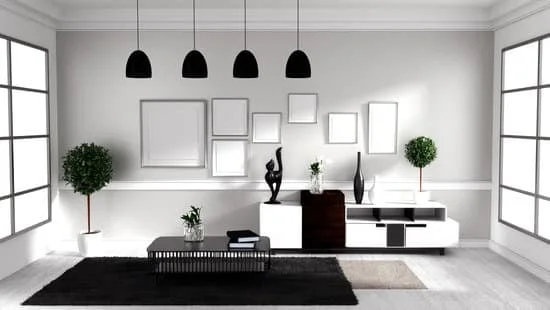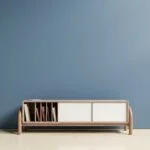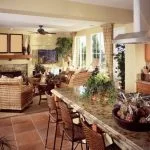If you’ve ever wondered what primitive home decor is, you’re in the right place. This article will provide you with an introduction to primitive home decor, its history and origins, key elements, use of natural materials, color palette and textures, furnishings and decorative pieces, DIY projects, tips for incorporating it into modern spaces, and the timeless appeal of this decorating style.
Primitive home decor has been gaining popularity in recent years as people look for ways to bring a sense of simplicity, warmth, and nostalgia into their homes. This style draws inspiration from early American settlers and pioneers, focusing on handmade items, natural materials, and a cozy lived-in feel.
Whether you’re looking to fully embrace the primitive aesthetic or simply incorporate some elements into your existing decor, understanding the basics can help you achieve the desired look in your home.
In this article, we will delve deeper into the world of primitive home decor – exploring its history and origins, discussing key elements and color palettes that define the style while also providing practical tips for incorporating it into modern living spaces. Whether you’re a seasoned interior design enthusiast or just looking to infuse some rustic charm into your home, this article will guide you through everything you need to know about primitive home decor.
History and Origins of Primitive Home Decor
Primitive home decor has a rich history and origins that date back to the early American settlers. The style was born out of necessity, as these early settlers had to make do with limited resources and materials. This led to the creation of simple and functional furnishings and decorative pieces that were made by hand using traditional techniques. The result is a charming and rustic aesthetic that is still popular today.
The Origins
The origins of primitive home decor can be traced back to the 17th and 18th centuries when European settlers arrived in the New World. These settlers brought with them their own unique furniture and decorative styles, which were adapted to suit the harsh conditions of their new environment. As a result, primitive home decor is characterized by its simplicity, functionality, and handcrafted elements.
Influence on Modern Design
Despite its humble beginnings, primitive home decor has had a significant influence on modern interior design. Its focus on natural materials, earthy color palettes, and handmade craftsmanship have all become defining features of contemporary rustic and farmhouse style interiors. In today’s fast-paced and mass-produced world, primitive home decor offers a sense of authenticity and connection to our history that many people find appealing.
Overall, understanding the history and origins of primitive home decor provides context for its enduring appeal in modern interiors. By appreciating its roots as a style born out of necessity and resourcefulness, we can gain a greater appreciation for the timeless charm it brings to our homes today.
Key Elements of Primitive Home Decor
Primitive home decor is a design style that focuses on natural, rustic, and vintage elements to create a cozy and welcoming atmosphere. The key elements of primitive home decor are essential in achieving the desired look and feel for this design style. One of the main features of primitive decor is its emphasis on simplicity, functionality, and handmade items. These elements are often combined to evoke a sense of nostalgia and traditional charm in a home.
Another important element of primitive home decor is the use of natural materials such as wood, metal, and textiles. These materials are often left in their raw or unfinished state to showcase their natural beauty and imperfections. This adds to the authenticity and vintage appeal of primitive decor. Additionally, incorporating worn or distressed finishes can further enhance the rustic aesthetic of this design style.
In addition to natural materials, simple color palettes and textures play a significant role in primitive home decor. Neutral tones such as earthy browns, muted greens, and warm grays are commonly used to create a harmonious and inviting ambiance. Textures like rough-hewn wood, aged metal, and cozy fabrics contribute to the tactile experience of primitive decor. By combining these key elements, individuals can achieve a timeless and nostalgic look that captures the essence of primitive home decor.
| Key Elements | Description |
|---|---|
| Natural Materials | Wood, metal, textiles left in raw or unfinished state for vintage appeal. |
| Simple Color Palettes | Neutral tones like earthy browns and muted greens for an inviting atmosphere. |
| Textures | Rough-hewn wood, aged metal, cozy fabrics for tactile experience. |
Using Natural Materials in Primitive Decor
Primitive home decor is known for its use of natural materials, which adds to its rustic and traditional charm. The emphasis on natural elements reflects the simplicity and authenticity that defines primitive design. To achieve the cozy and inviting look of primitive home decor, consider incorporating these natural materials into your space:
- Wood: One of the most essential elements in primitive decor, wood is often used for furniture, flooring, and decorative accents. Look for pieces with a distressed or weathered finish to enhance the rustic appeal.
- Stone: Incorporating stone elements such as fireplace surrounds, tabletops, or decorative accessories can add a sense of earthiness to your primitive decor.
- Textiles: Natural fabrics like cotton, linen, and burlap are commonly used in primitive home decor to create a warm and welcoming atmosphere. Consider using these textiles for curtains, upholstery, and throw pillows.
In addition to these foundational natural materials, other organic elements such as rattan, jute, and dried botanicals can also be integrated into primitive decor to bring in texture and visual interest.
When it comes to using natural materials in primitive home decor, it’s important to prioritize craftsmanship and quality. Handcrafted items made from sustainable materials not only contribute to the authenticity of the space but also align with the ethos of simple living that is characteristic of primitive design. By incorporating these natural elements thoughtfully into your home decor, you can capture the timeless beauty and understated elegance of primitive style.
It’s no wonder that the use of natural materials is central to what is primitive home decor – they create an ambiance reminiscent of simpler times while adding a touch of warmth and character to any living space.
Color Palette and Textures in Primitive Home Decor
Primitive home decor is characterized by its use of a specific color palette and textures that create a warm, inviting atmosphere in the home. When it comes to primitive home decor, the colors used are typically earthy tones such as browns, deep reds, greens, and mustard yellows.
These colors are inspired by nature and bring a sense of warmth and comfort to the space. In addition to these earthy tones, primitive home decor also incorporates textures that add depth and richness to the overall design.
Incorporating textures into primitive home decor is essential for creating an authentic look and feel. Textures such as rough-hewn wood, distressed metals, burlap, and worn leather add visual interest and tactile appeal to the space. These textures evoke a sense of nostalgia and history, which are key elements of primitive decor. To achieve an authentic primitive look, it’s important to mix and match these textures throughout the space.
To further enhance the color palette and textures in primitive home decor, natural materials are often used in furnishings and decorative pieces. For example, reclaimed wood furniture, hand-forged metal accents, and woven textiles made from natural fibers all contribute to the rustic charm of primitive decor. By incorporating these natural materials into the design, homeowners can create a cozy and inviting atmosphere that reflects the simplicity of traditional primitive style.
In summary, the color palette and textures in primitive home decor play a crucial role in capturing the essence of this timeless decorating style. By using earthy tones, incorporating various textures, and utilizing natural materials throughout the space, homeowners can create an authentic primitive look that exudes warmth and comfort. Whether opting for DIY projects or seeking out artisanal pieces, paying attention to color palettes and textures is key in achieving an inviting primitive home decor aesthetic.
Furnishings and Decorative Pieces in Primitive Home Decor
Primitive home decor is characterized by a rustic and simple aesthetic, which is reflected in the furnishings and decorative pieces used to adorn the space. This style draws inspiration from the past, specifically the early American frontier and colonial periods. When it comes to choosing furnishings and decorative pieces for a primitive home decor, there are certain key elements to keep in mind.
Functional Furniture
One of the hallmarks of primitive home decor is the use of functional furniture that is both practical and visually appealing. Pieces such as farmhouse tables, Windsor chairs, and wooden benches are commonly found in homes with a primitive decor style. These furnishings are typically made from natural materials like wood and are designed with a simple, utilitarian look that reflects the lifestyle of early settlers.
Antique Accents
Incorporating antique accents into primitive home decor adds depth and authenticity to the space. Vintage pieces like old wooden crates, hand-forged metal hardware, or weathered farm tools can be repurposed as unique decorative elements that tell a story of bygone eras. These accents not only add visual interest but also contribute to the historic charm that is characteristic of primitive home decor.
Textiles and Textural Elements
Primitive home decor often incorporates textiles such as hand-woven rugs, quilts, and textiles made from natural fibers like cotton or burlap. These textiles add warmth and coziness to a space while also introducing textural elements that enhance the overall aesthetic. Additionally, incorporating soft textures through pillows or throws can soften the look of harder surfaces like wood or metal for added comfort.
Using these key elements when selecting furnishings and decorative pieces for a primitive home decor will help create an authentic and inviting space that captures the essence of this timeless design style.
DIY Projects for Primitive Home Decor
When it comes to primitive home decor, do-it-yourself projects are a great way to add personal touches to your living space. Whether you’re an experienced crafter or new to DIY, there are plenty of simple and creative projects that can help you achieve the rustic, vintage look associated with primitive decor.
One popular DIY project for primitive home decor is creating your own handmade signs. Whether you want to feature a meaningful quote or simply label different areas of your home, wooden signs with distressed paint and stenciled lettering add a charming touch to any room. You can easily find tutorials online for making these signs using reclaimed wood or wood scraps.
Another fun and easy project is crafting your own farmhouse-style centerpiece for your dining table. Using mason jars, burlap, and wildflowers or dried herbs, you can create a simple yet beautiful arrangement that embodies the warm and cozy feel of primitive decor. This project not only adds a touch of natural elements but also brings a sense of tranquility to your dining area.
For those who enjoy sewing or knitting, making your own throw pillows or blankets can be a rewarding DIY project for incorporating primitive home decor into your living space. Look for fabric in earthy tones and simple patterns to create cozy accents for your sofa or armchairs.
| Primitive Decor DIY Projects | Description |
|---|---|
| Handmade Signs | Create personalized signs with distressed paint and stenciled lettering using reclaimed wood. |
| Farmhouse-style Centerpiece | Make a rustic centerpiece using mason jars, burlap, and wildflowers or dried herbs for the dining table. |
| Homemade Throw Pillows | Sew or knit throw pillows in earthy tones and simple patterns to add cozy accents in the living area. |
Tips for Incorporating Primitive Home Decor in Modern Spaces
In a world where modern design often dominates, many people are seeking to incorporate the warmth and charm of primitive home decor into their living spaces. While primitive decor may seem rustic and old-fashioned, it can add character and a sense of history to any modern home. Here are some tips for successfully incorporating primitive home decor in modern spaces.
First, consider mixing primitive pieces with modern furniture and accents. This juxtaposition can create an interesting and eclectic look that reflects your personal style. For example, you can place a vintage wooden crate next to a sleek leather sofa or display a collection of rough-hewn pottery on a contemporary glass coffee table.
Another tip is to focus on natural materials and textures when adding primitive elements to your modern space. Look for items made of wood, metal, stone, or woven fibers to bring in the earthy feel that is characteristic of primitive decor. Incorporating handmade textiles such as quilts and hand-woven rugs can also add warmth and authenticity to your space.
Additionally, don’t be afraid to use vintage or antique items as focal points in your modern room. Whether it’s an old milk jug repurposed as a vase or a weathered farm table used as a kitchen island, these unique pieces can become conversation starters and add personality to your home.
Remember that the key to successfully incorporating primitive decor in modern spaces is finding the right balance between old and new, creating a harmonious blend of past and present.
By following these tips, you can successfully bring the timeless appeal of primitive home decor into your modern space, creating a welcoming and unique atmosphere that reflects your individual taste and appreciation for history.
Conclusion
In conclusion, primitive home decor is a style with a timeless appeal that brings warmth and charm to any living space. Its origins may be rooted in early American settlements, but its enduring popularity today speaks to its ability to create a cozy and inviting atmosphere in modern homes.
The use of natural materials such as wood, stone, and iron in primitive home decor adds a sense of authenticity and connection to the natural world. This emphasis on simplicity and craftsmanship creates a sense of nostalgia and comfort that resonates with many people seeking to infuse their homes with character and history.
Whether through DIY projects or carefully curated furnishings and decorative pieces, incorporating primitive home decor into modern spaces allows for personal expression and creativity. The color palette and textures associated with this style evoke a feeling of rustic elegance that can transform any room into a welcoming retreat. Despite its humble origins, primitive home decor continues to captivate those who appreciate the beauty of simplicity, tradition, and an unhurried way of life.
Frequently Asked Questions
What Is Considered Primitive Decor?
Primitive decor typically includes handmade items, vintage pieces, and rustic elements. It often showcases simple, functional objects that have a rough, unfinished look. This style evokes a sense of nostalgia and simplicity, with earthy colors and natural materials.
What’s the Difference Between Farmhouse and Primitive?
The main difference between farmhouse and primitive decor lies in their respective aesthetic inspirations. While both styles embrace a rustic and cozy feel, farmhouse decor takes cues from traditional farmhouses with a cleaner, more refined look. On the other hand, primitive decor draws from early American colonial or folk art influences, featuring rougher textures and a more aged appearance.
Is Primitive Decor Still Popular?
Yes, primitive decor is still popular today. Many people are drawn to its timeless charm and down-to-earth appeal. Its emphasis on craftsmanship and history resonates with those who appreciate authenticity and warmth in their home environments. Despite evolving design trends, primitive decor continues to have a dedicated following due to its enduring appeal.

I’m thrilled to be your companion on this exciting journey through the world of home decor and design. With a passion for turning houses into homes and a keen eye for the finer details, I’m here to help you transform your living spaces into beautiful, functional, and meaningful havens.





